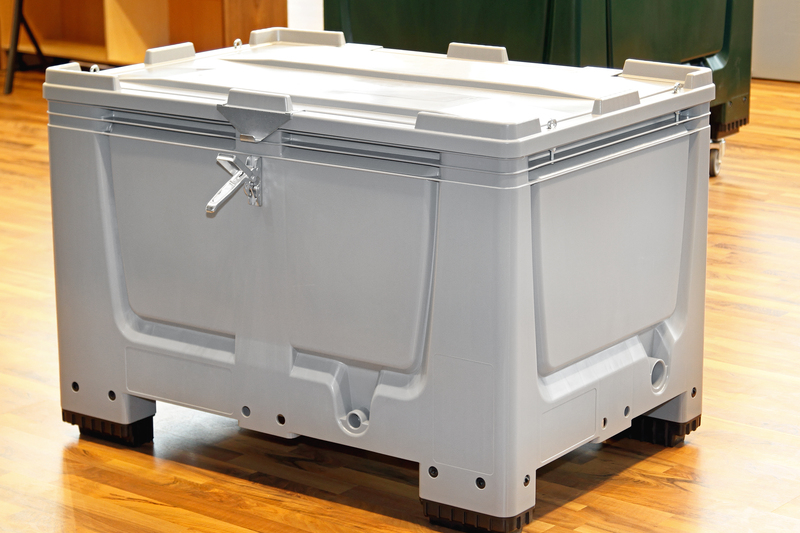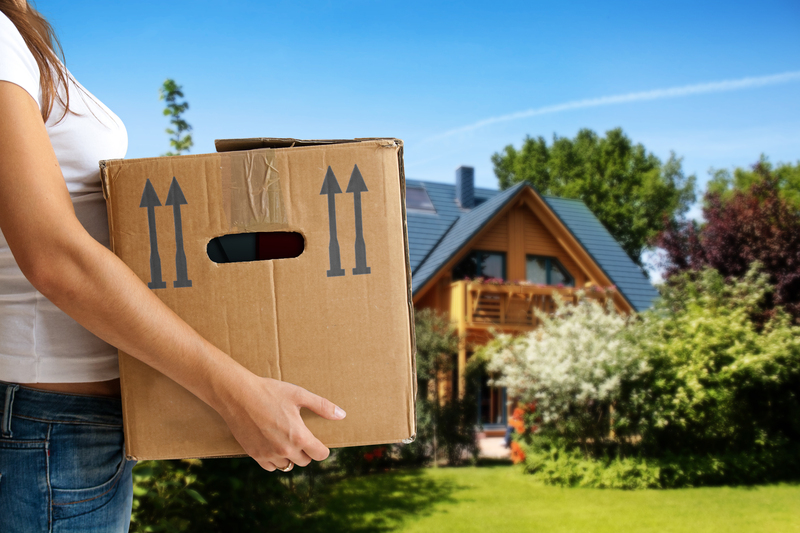The Ultimate Checklist for Packing Right When Moving Home
Moving to a new home can be both exciting and stressful. The process of packing up your life and ensuring everything reaches your new destination safely is a task that requires careful planning, organization, and execution. To make this transition as smooth as possible, having the ultimate checklist for packing right when moving home is essential. In this comprehensive guide, we'll walk you through every critical step, so you leave nothing behind and arrive at your new doorstep with everything in order.

Why Is Proper Packing Important?
Before jumping into the moving home packing checklist, it's crucial to understand why packing right is so important. Proper packing minimizes the risk of damage, helps you save money and time, reduces stress, and ensures all your belongings stay organized throughout the move.
- Prevents damage to fragile and valuable items during transit
- Speeds up the unpacking process at your new home
- Limits expenses by reducing packing material waste
- Reduces stress and confusion on moving day
When Should You Start Packing for Moving?
Timing is key. Ideally, you should start planning and organizing for your move at least 6-8 weeks before your moving day. This will give you ample time to sort, declutter and pack without rushing.
- Early preparation allows you to make thoughtful decisions, such as what to keep and what to discard
- Procrastination often leads to haphazard packing, misplaced items, and unnecessary stress
The Comprehensive Home Packing Checklist
1. Gather Packing Supplies
The first step on any packing checklist when moving house is to assemble all the necessary packing materials. Having the right supplies will make the process faster and more efficient.
- Sturdy cardboard boxes in various sizes
- Packing tape and dispensers
- Bubble wrap and packing paper for fragile items
- Permanent markers for labeling
- Scissors and box cutters
- Plastic bags or ziplock bags for small items
- Stretch wrap for furniture
- Labels or colored stickers for easy box identification
- Blankets or moving pads to protect furniture
- Specialty boxes (for TVs, mirrors, or wardrobe items)
2. Plan and Prioritize
Organize your packing process by having a clear plan and priorities. Go room by room and list out everything that needs to be packed. This will help you keep track of your progress and ensure nothing is forgotten.
- Start with items you rarely use (attic, basement, garage, storage spaces)
- Pack off-season clothes and holiday decorations next
- Leave daily essentials for last
3. Declutter Your Belongings
Moving is the perfect time to get rid of unwanted things. Go through your items and decide what to keep, donate, sell, or discard. The less you bring, the easier and cheaper your move will be.
- Create "Keep", "Sell", "Donate", and "Trash" piles
- Host a garage sale or use online platforms to sell
- Arrange pick-ups or drop-offs for donations
- Dispose of broken or non-usable items responsibly
4. Pack Room by Room
Focus on one room at a time. This approach keeps you more organized and helps maintain packing right when moving home.
- Kitchen: Start with rarely used appliances and dishware. Bubble wrap all fragile items. Use original boxes for electronics if possible.
- Bedrooms: Pack out-of-season clothes first. Use wardrobe boxes for hanging garments.
- Living Room: Disassemble furniture carefully. Wrap electronics and label all cables.
- Bathrooms: Use small containers and plastic wrap to prevent toiletry spills.
- Garage & Shed: Remove gasoline or hazardous materials. Bundle tools and wrap sharp edges.
5. Label Everything Clearly
Accurate labeling is an essential tip for packing right when moving home. Mark each box with the contents and the room to which it belongs.
- Write on the sides, not the top, so labels are visible when stacked
- Use different colored markers or stickers for each room
- Mark boxes containing fragile items as "FRAGILE" and indicate which side is up
6. Protect Fragile and Valuable Items
Take special care to pack fragile, valuable, and sentimental items:
- Use plenty of bubble wrap and packing paper
- Reinforce boxes with extra tape
- Don't overload boxes - heavy items should go in small boxes
- Pack dishes vertically and fill gaps with cushioning material
- Seal liquids tightly and store them in ziplock bags in case of leaks
7. Inventory and Document
For added security, create a home moving inventory list:
- Number all boxes and keep a master list of their contents
- Take photos of electronics, furniture, or valuable items before you pack them
- Keep receipts and documentation for high-value items
8. Prepare an Essentials Box
Pack a moving essentials kit with all the items you'll need the first night in your new home. This should be the last box you pack and the first you open.
- Toiletries: toothbrush, toothpaste, soap, toilet paper
- Medications and first-aid kit
- A change of clothes and pajamas
- Chargers for phones and devices
- Basic kitchen kit (a few plates, cups, utensils, snacks)
- Bedding and towels
- Important documents (ID, lease or mortgage papers, insurance, medical records)
- Toolkit and scissors or box cutter
- Cleaning supplies
Packing Room By Room: Detailed Checklist
Kitchen
- Purge pantry and fridge of expired items
- Use original packaging for small appliances if available
- Wrap glassware, plates, and mugs in packing paper or bubble wrap
- Pack pots and pans separately from fragile items
- Label and tape boxes securely
Living Room
- Remove cushions and pillows; pack separately in large bags
- Wrap lamps and lampshades individually
- Disassemble furniture (keep hardware in labeled bags)
- Protect TVs and electronics with padded blankets, or use specialty boxes
Bedrooms
- Use wardrobe boxes for hanging clothes
- Pack off-season clothes in suitcases or vacuum bags
- Disassemble bed frames and wrap mattresses in covers
- Store jewelry and valuables in a secure bag to transport personally
Bathrooms
- Use small boxes for toiletries and cosmetics
- Seal open containers to prevent spills
- Pack towels and linens in large boxes or bags
Home Office
- Pack important documents in a folder or strong box
- Backup files digitally before disconnecting electronics
- Wrap computers and accessories in anti-static or padded materials
- Label cords and store together
Garage & Outdoor Areas
- Remove and safely dispose of flammables
- Bundle garden tools and protect sharp edges
- Keep hardware and small parts in labeled ziplock bags
- Drain fuel from lawnmowers, trimmers, or other machinery
Expert Packing Tips for a Stress-Free Move
- Start early: Set a realistic timeline for each stage of packing
- Pack a little each day instead of all at once
- Use suitcases for heavy or bulky items
- Don't make boxes too heavy to lift; distribute weight evenly
- Reuse towels and socks to cushion breakables
- Stack plates on their sides, not flat, to reduce breakage
- Keep hardware together in clearly labeled bags taped to disassembled furniture
What Not to Pack When Moving Home
Some items are better left unpacked, especially if you're using a professional moving company. Always check with your movers for restrictions, but generally avoid packing:
- Flammable or hazardous substances (paint, propane, aerosols, chemicals)
- Perishable food
- Valuables (jewelry, cash, heirlooms) - keep these with you
- Important documents (passports, IDs, insurance) - transport personally
- Pets and plants (most movers won't handle them)
Packing Right: Moving Day Checklist
- Double-check every room, cupboard, and closet before leaving
- Make sure all boxes are sealed and labeled
- Have your essentials box and valuables in a safe, accessible spot
- Leave a cleaning kit for last-minute touches
- Hand over keys and instructions to the new owners or landlord

FAQs About Packing for a House Move
How long does packing up a house take?
The time needed depends on the size of your home and the number of belongings. Generally, allow at least a week per bedroom for a thorough packing job.
Can I use garbage bags for packing?
Garbage bags are great for soft, non-breakable items (like clothes or bedding), but avoid using them for anything fragile or heavy.
Should I pack everything before the movers arrive?
Yes! For an efficient move, have everything ready to go before the moving company arrives. The only exception might be furniture disassembly, which some movers will handle.
Conclusion: Pack Like a Pro
With this ultimate checklist for packing right when moving home, you're well on your way to a smooth and organized relocation. By staying systematic, starting early, and using the tips and checklists provided, you can reduce stress and protect your possessions every step of the way.
Don't forget: preparation is key. Take it one room at a time, label thoroughly, and prioritize your essentials. With every box packed, you're one step closer to making your new house a home. Happy moving!



